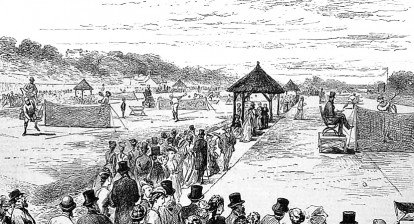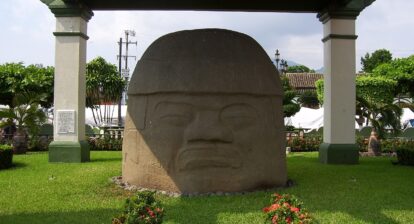Ancient Amri-Nal Culture from Pakistan
Transcript/ Blogpost
The Amri-Nal culture – one of the oldest in Pakistan. The ancient cities of Mohen Jo Daro and Harappa in Pakistan are as famous as the cities of Egypt and Mesopotamia. In fact, the Indus Valley Civilization was the largest of the four ancient civilizations, which included Mesopotamia, Egypt and China. Mohen Jo Daro and Harappa had their heyday between 2600 BC to 1800 BC. But South Asia has been a hub of ancient civilizations even before there was a Mohen Jo Daro and a Harappa.
(Read Who were the South Asians?)
One such settlement is Amri, in modern day Sindh, Pakistan, which goes back to the copper age, at around 3600 BC. This site is located south of Mohen Jo Daro, situated near the foothills of Kirthar Mountains – an important ancient urban centre in lower Sindh. Amri is close to Balochistan, where development of earlier farming communities from 6000 BC to 4000 BC ultimately led to urbanization.
The ancient eight-hectare mounds at Amri have been extensively excavated, revealing that the earliest phase was a fortified town that flourished from 3600 to 3300 BC, and belonged to the pre-Harappan stage of the Indus Valley civilization. Evidence indicates widespread fire around 2500 BC and subsequently, in the period between 2750-2450 BC more and more elements of Indus Valley culture start to appear.
Amri was not just one settlement but a whole culture. Several settlements attributed to it have been discovered, mainly in lower Sindh and Balochistan. These settlements are most often found distributed along the terraces of old and active river courses. Among these, the Tharro Hills site near the town of Gujo, is one of the most famous Amri sites in lower Sindh.
West of Amri, Sohr Damb or Red Mound (flourished in around 3800-2300 BC) is another archaeological site located near Nal in central Balochistan, Pakistan. This one also shows signs of settlement before the Indus Valley Civilisation. Sohr Damb is also known as Nal and it, together with the Amri site, gave its name to the entire prehistoric Amri-Nal culture. It extends around 4.5 hectares, and its geologically formed mound is 13 meters high. Excavations at Nal have revealed four periods of occupation, with several sub-periods. It had multi-level structures, although it was never a big city.
The entire prehistoric Amri-Nal culture is attributed to the dual typesites of Amri and Nal (a typesite is used to define a particular archaeological culture or other typological unit, which is often named after it). Amri is the characteristic chalcolithic or copper-age site in lower Sindh, while Nal is in Balochistan.
Excavations started in 1929 by N G Majumdar, were followed by even more extensive ones by Jean Marie Casal and his colleagues between 1959 and 1962. These have revealed mud brick houses divided into small rooms. Human remains have been found buried with a variety of grave goods (including ceramics, pearls, and semi-precious stones like carnelian, agate, lapis lazuli, also steatite beads, shells with red pigment and grinding stones). There were also millstones and bone implements.
Pottery discovered here has its own characteristics and those found at Amri are known as ‘Amri ware’. The combined pottery at both Amri and Nal is sometimes collectively described as ‘Amri-Nal ware’. This fine ware is light buff with linear geometric motifs painted in dark brown and black, while the coarse ware, though not so coarse at all, is red. Typical Nal pottery is buff with complex geometric and figurative motifs painted in black, and often with turquoise, yellow, and red as additional colours.
Amongst the tools found at Amri are knapped stone assemblages very typical of the area and not found on other sites nearby. The most typical tool is a triangle retouched along three sides, called the ‘Amri Triangle’.
Bones of domesticated humped cattle, as well as sheep and goats have been found at the locations. It also seems that the inhabitants kept dogs as well. Wheat and barley were probably cropped from the earliest period but were later replaced by the indigenous South Asian crops of millet and sesame. Hunting and fishing may also have been part of the economy. Middens (or rubbish heaps) at some sites also revealed shells, as well as gazelle and other wild animal remains.
Because this part of the Indus valley is poor in mineral and semi-precious stone deposits, the presence of semi-precious stones and metal artefacts, therefore, indicates some interaction with other social groups in the Indus Valley and/or traditions in Balochistan. Like other pre-Harappan towns, there is no clear writing system, although there is a script discernible on the pottery.
There is not a lot of additional information available about this enigmatic culture. However, it is thought that the indigenous Amri-Nal culture was eventually subsumed into the Harappan culture that followed it.
No matter what, it is still amazing to see how people lived in this area so long ago!
Sources: Read a study here // Harappa.com //
Casal, J. M. (1964). Fouilles d’Amri. Paris: C. Klincksieck.
Coningham, R., & Young, R. (2015). The Archaeology of South Asia: From the Indus to Asoka, c. 6500 BCE-200 CE. New York: Cambridge University Press. // Shaffer, J.G., & Thapar, B.K. (1992) “Pre-Indus and Early Indus Cultures of Pakistan and India.” In A.H. Dani, V.M.Masson, J. Harmatta, B.N.Puri, G.F.Etemadi, B.A.Litvinskii, G.Zhang Eds. History of Civilizations of Central Asia. Paris: Unesco // Amri Sindh Culture and History of Pre Harappa site Lecture 10 on YouTube







